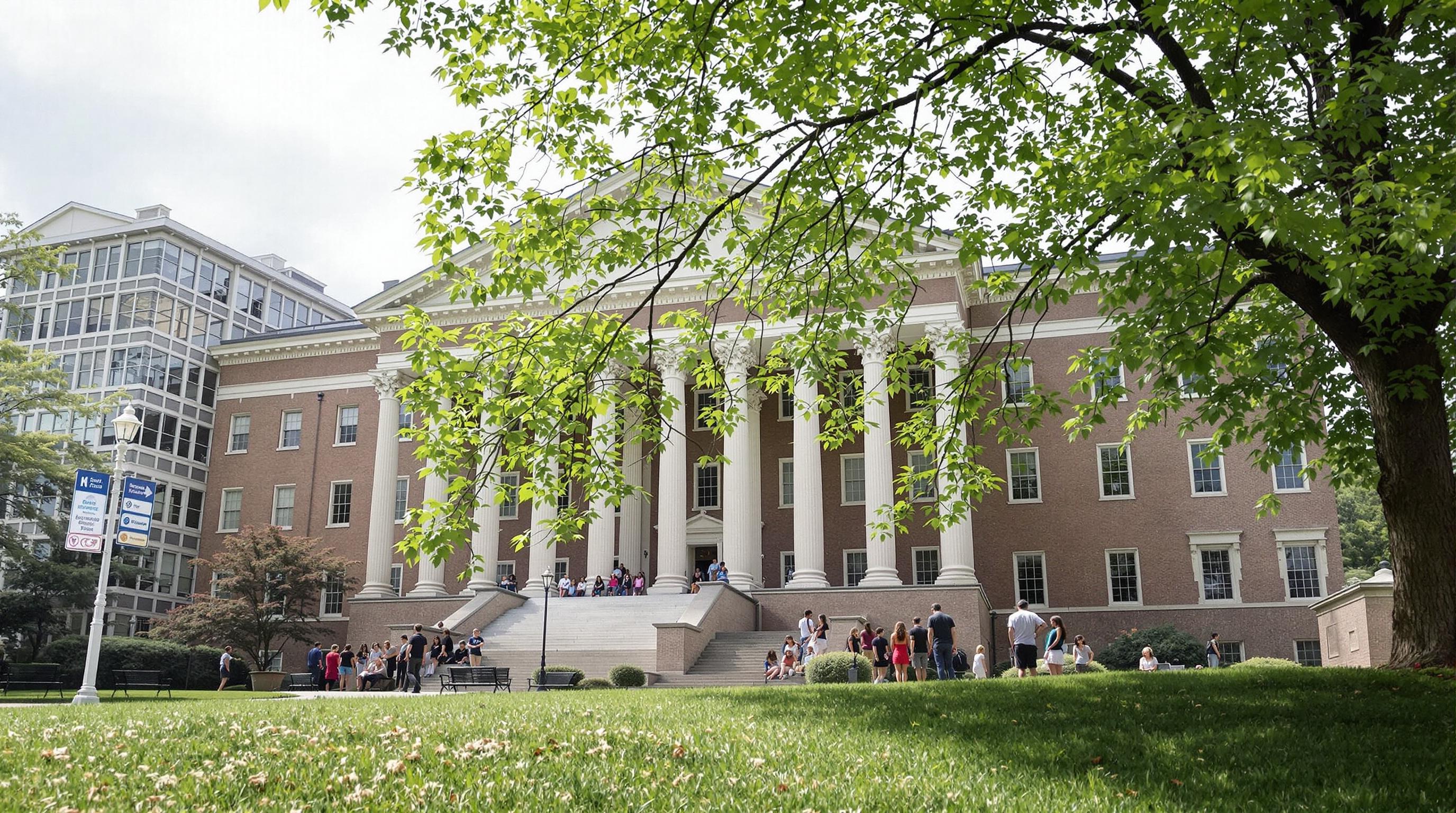Featured Articles
- 9 Hidden Financial Aid Opportunities Every College Applicant Should Explore Before Applying
- From Drones to Diversity: The Surprising Role of Tech in Shaping Modern College Admissions Strategies
- How Midnight Email Strategy and Timing Secretly Influence College Acceptance Odds More Than You Think
- "Micro-Majors: The Rise of Niche Fields and Their Impact on College Admissions Trends"
- The Impact of AI-Generated Essays on Authenticity in College Admissions: A New Frontier or a Recipe for Disaster?
When Extracurriculars Go Awry: The Dark Side of College Admissions Activities
When Extracurriculars Go Awry: The Dark Side of College Admissions Activities
Extracurricular activities are often hailed as a vital ingredient in the recipe for college admission success, but their impact can take unexpected and even damaging turns. As students pursue accolades and achievements to bolster their résumés, the pressure can lead to a dark side of competition, stress, and even ethical dilemmas.
Transparency and the Pressure Cooker
In a world where 85% of college admissions officers consider extracurriculars to be a significant factor in their decisions (National Association for College Admission Counseling, 2019), students feel compelled to fill their schedules with clubs, sports, and volunteer work. However, the emphasis on this part of their profile often creates a “pressure cooker” environment that can lead to burnout.
The Allure of Quantity Over Quality
Once upon a time in a suburban high school, there was a student named Sarah. Like many of her peers, she felt the need to accumulate a laundry list of extracurricular activities. It wasn't enough for her to join just one club; she ended up juggling student government, the debate team, tennis, and volunteer work at a local food bank.
Initially, Sarah thrived on the energy of being involved. However, her "successful" resume quickly turned into a source of stress. As events coincided, and deadlines overlapped, she often found herself missing out on key moments, like a friend’s birthday party, just to make a meeting she barely wanted to attend.
The Impacts of Overscheduling
Research indicates that overscheduling can harm both mental health and academic performance. A study published in the Journal of Education Psychology found that students involved in more than three extracurricular activities reported higher levels of anxiety and lower academic achievement (Smith & Smith, 2020). Sarah’s story echoed these findings. She ceased to enjoy her activities, transforming her once-passionate pursuits into mere checkboxes.
Competing for ‘Uniqueness’: The Dangers of Artificial Experiences
Then there's the issue of ‘manufactured’ extracurriculars. In a desperate bid to stand out among applicants, some students create artificial experiences that seem impressive but lack authenticity. Enter the trend of “resume padding,” where students fabricate or exaggerate their roles in volunteer work or clubs.
Consider the case of Tom, who claimed to be a “founder” of a charity to impress colleges. In reality, Tom had contributed little more than a few hours of his time stuffing envelopes. When questioned about his leadership at college interviews, he faltered, realizing he was in over his head. Such situations not only erode trust but can also have long-lasting effects on a student’s self-esteem.
The Road to Burnout: When Passion Turns Sour
Burnout isn’t exclusive to overscheduled students; it can also stem from the relentless pursuit of excellence in activities once thought joyous. This brings us to Kevin's story, a promising student and extraordinary musician. His love for music became overshadowed by the pressure to achieve perfection for college auditions.
“I practiced until my fingers bled,” Kevin recalls, “but I lost my love for it.” This kind of burnout is all too common, as students often sacrifice their passions to chase accolades that may not be as valuable or fulfilling as initially thought.
The Social Media Trap
Within the modern college admissions landscape comes yet another layer: social media. Competition now includes perceptions crafted on platforms like Instagram and TikTok. Students showcase "perfect" lives filled with endless awards, creating an illusion that success is synonymous with relentless activity.
According to a 2021 survey by Pew Research Center, over 70% of teenagers believe that social media impacts their self-esteem negatively. A constant comparison can lead students to overcommit to activities that aren’t aligned with their genuine interests, ultimately leading to dissatisfaction.
Advocating for Authenticity
So, what can be done about these chaotic college admissions practices? Encouraging authenticity is crucial. In fact, some colleges, like the University of California, have begun to shift their evaluation processes, looking for students who demonstrate genuine engagement rather than a packed résumé. They’ve recognized that a meaningful experience can outweigh a long list of superficial activities.
However, the onus isn’t solely on colleges. High schools also need to communicate the importance of quality experiences. Educators and parents can help students reflect on their interests and passions instead of simply accumulating activities to impress admissions committees.
Creating a Balanced Approach
Establishing a balanced approach encourages students to be intentional about their extracurricular activities. Rather than joining every available option, students should be advised to select few that resonate with them. This can be exemplified through a simple questionnaire asking what truly excites them, rather than a checklist of “impress the admissions committee” tasks.
Peer Pressure and the Fear of Missing Out
Another aspect to consider is the role of peer pressure in extracurricular choices. The fear of missing out (FOMO) has never been more prevalent. While many may argue that engaging in numerous activities helps build a well-rounded applicant, the truth is that it can often lead students to pursue things they may not genuinely enjoy.
Jenny, for example, joined the robotics team because her friends did, but she couldn’t care less about technology. Her motivation ebbed as she struggled to stay engaged. “I remember falling asleep at my desk even during competitions,” she told me. This illustrates how peer pressure can adversely affect genuine passion, enthusiasm, and even academic performance.
Understanding True Engagement
To foster genuine engagement, students should be encouraged to explore what they genuinely enjoy and what they can contribute to their communities. This can lead to more impactful experiences, ultimately shining brighter on a college application than a lengthy list of superficial achievements.
Case Studies: A Look Into College Admissions Policies
Various universities have begun to shift their admissions criteria in accordance with the growing evidence around the mental health struggles posed by traditional college prep. The University of Chicago adopted a "test-optional" policy in response to concerns about the overemphasis on standardized testing. Meanwhile, Harvard implemented a personal rating component, acknowledging that grades and scores do not capture the whole picture.
These examples are steps toward welcoming a broader perspective on what constitutes a well-rounded student, though they are not without controversy. Critics argue that these factors could lead to more bias, but the need for change is evident. As society continues striving for balance, transparency, and authenticity, prospective students can perhaps breathe a little easier.
Finding Support in the Overachiever’s Regimen
The past few pages have highlighted the mixed blessing of extracurricular activities, yet there remains hope. Many high schools now offer counseling and support programs aimed at equipping students with the tools to navigate these pressures effectively. Peer mentorships, workshops, and resource fairs empower students to connect authentically while encouraging exploration of their passions, free from overwhelming pressure.
Looking Towards a Healthier Future
Ultimately, addressing the dark side of extracurriculars requires a multifaceted approach. It begins with redefining success. As college admissions continue to evolve, society must recognize that mental well-being and authentic engagement are just as important—if not more so—than a string of prestigious clubs on a résumé.
Empowering students to embrace their individuality rather than succumbing to societal pressure can foster healthier trajectories toward their aspirations. Recognizing the balance between ambition and self-care is crucial, and let’s hope that one day, our futures become less about who does the most and more about who does what truly matters.
A Call to Action
To all the students, parents, and educators reading this, let’s shift the narrative surrounding college admissions. Let’s encourage a culture that celebrates authenticity, passion, and mental health. After all, a resume filled with achievements isn’t worth much if it comes at the cost of true happiness, self-discovery, and well-being.




